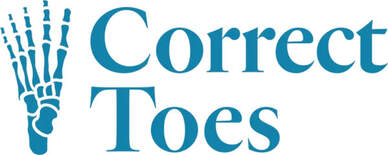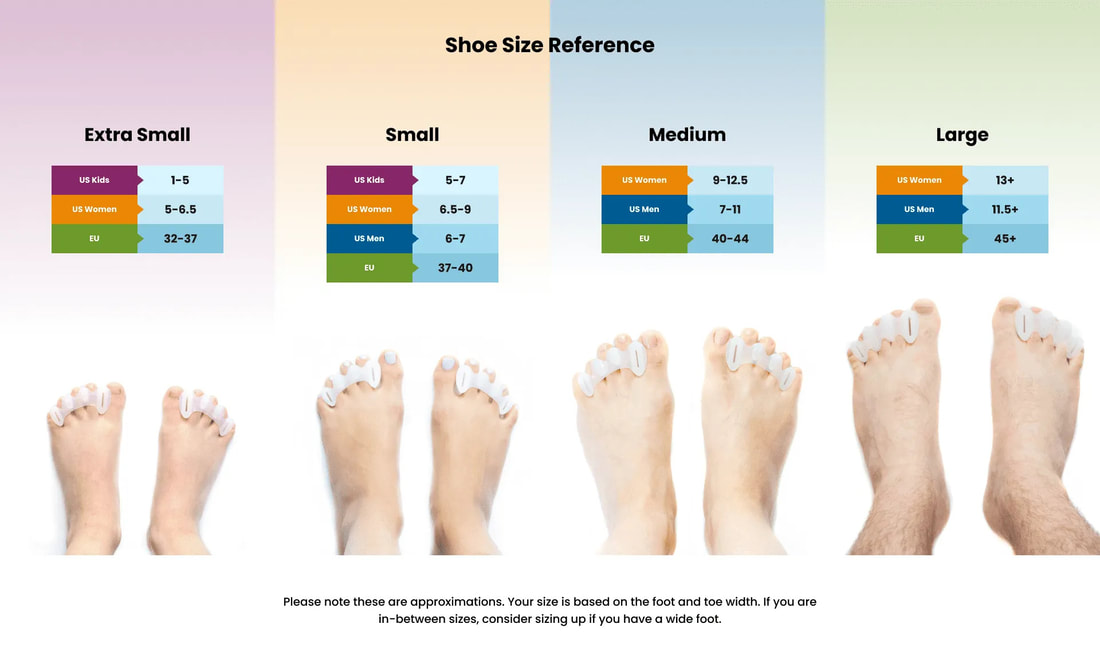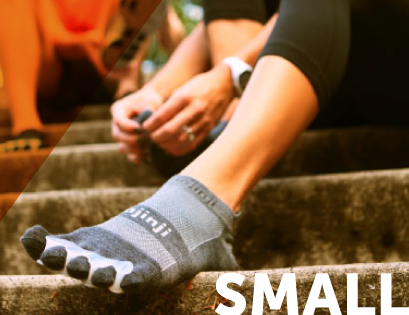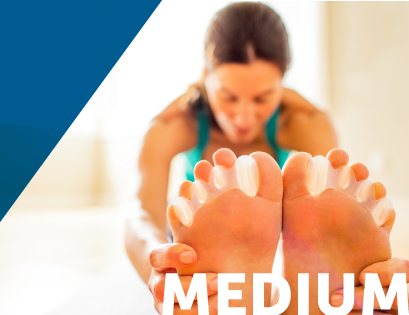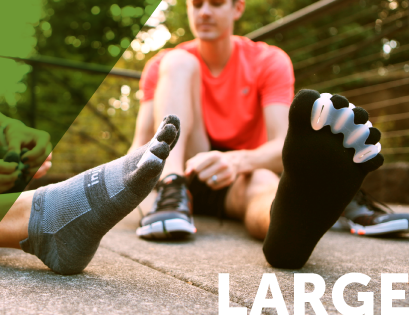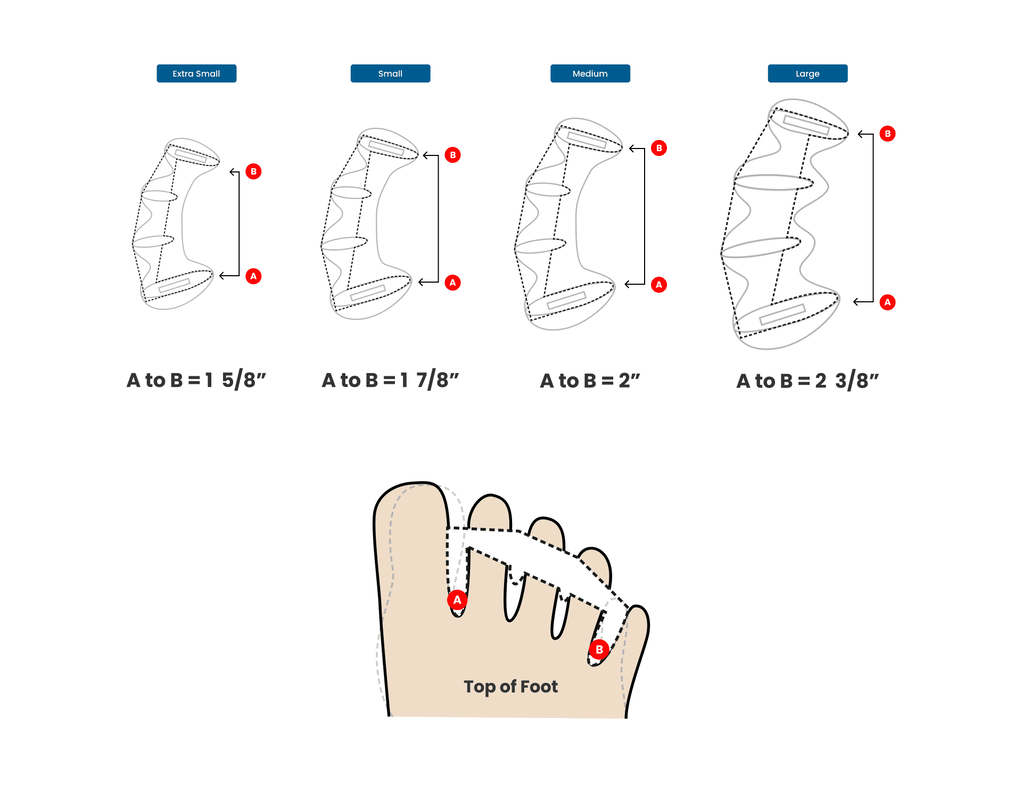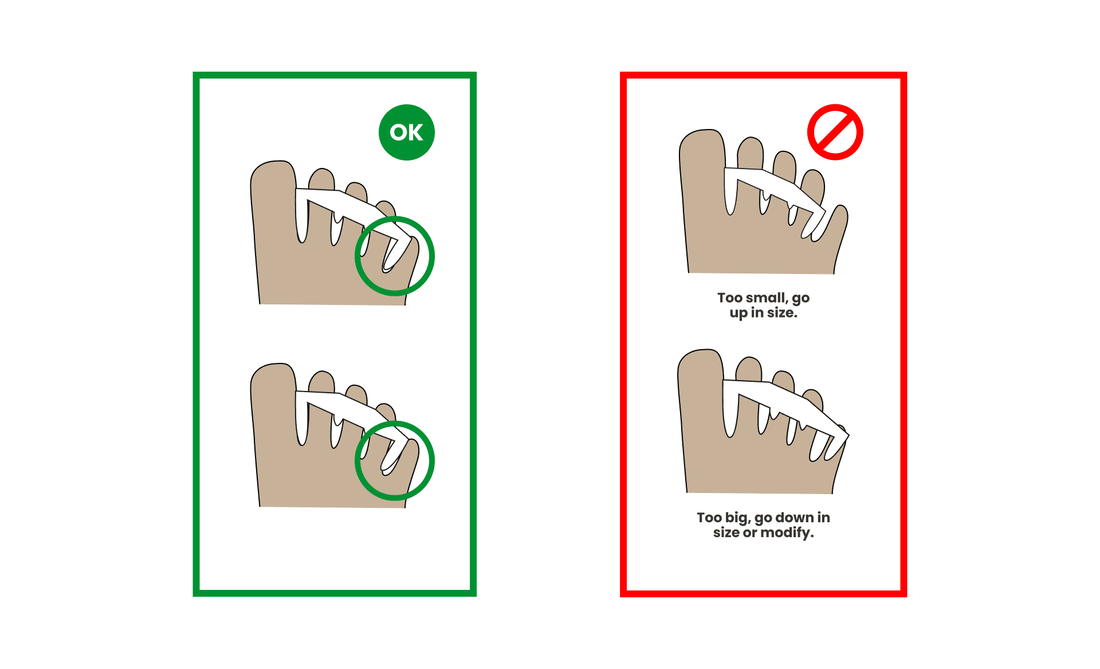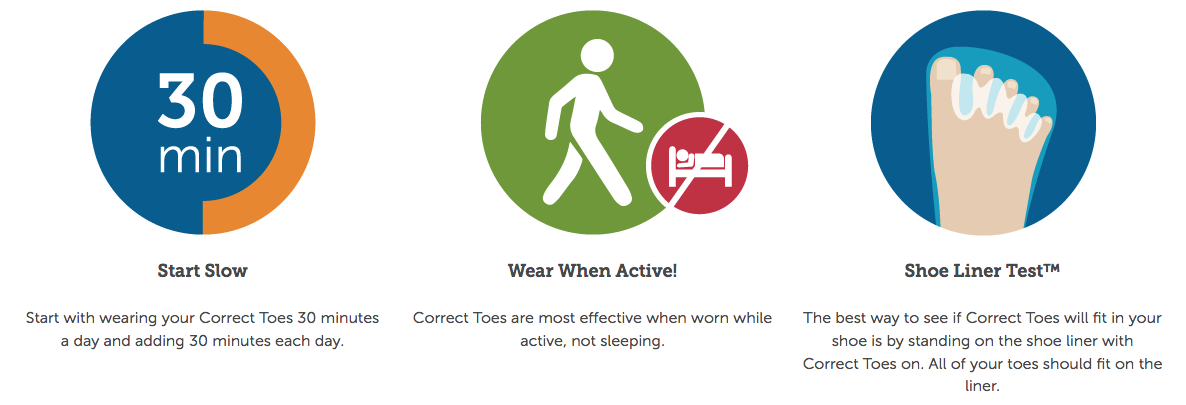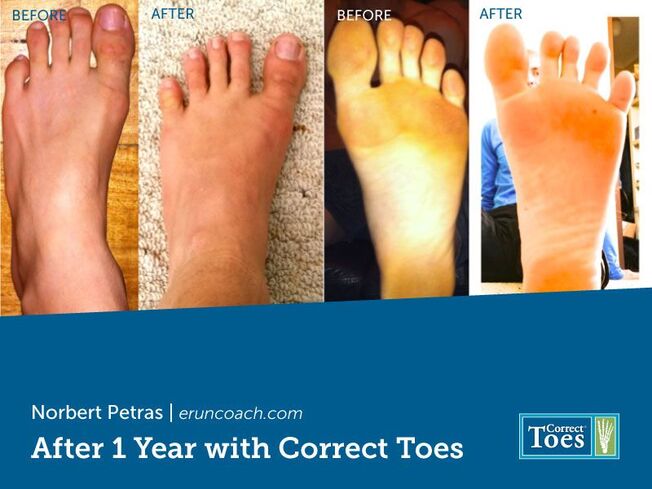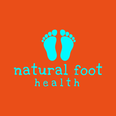CORRECT TOES SIZING
Correct Toes are available in four sizes: Extra Small, Small, Medium and Large. While appropriate sizing loosely correlates to shoe size, Correct Toes size will ultimately be determined by toe length and toe girth. If you are in-between sizes, consider sizing up if you have a wide foot.
Still unsure of which size is best for your feet? Follow the instructions below, or email a picture of your feet (preferably beside a ruler) and we will be happy to assist you.
Step 1: Download and Print the Correct Toes TemplatePrint the sizing template and use it to check your toe’s width.
Before printing, please note that this document is 8.5 inches x 11 inches. Be sure to print “actual size”. Do not print with “fit to page” or “scale” options selected.
Still unsure of which size is best for your feet? Follow the instructions below, or email a picture of your feet (preferably beside a ruler) and we will be happy to assist you.
Step 1: Download and Print the Correct Toes TemplatePrint the sizing template and use it to check your toe’s width.
Before printing, please note that this document is 8.5 inches x 11 inches. Be sure to print “actual size”. Do not print with “fit to page” or “scale” options selected.
Step 2: Cut Out the Template and Test it on your toes
Using the sizing pattern, position point Ⓐ at the webbing between your big toe and 2nd toe of your right foot.
Using the sizing pattern, position point Ⓐ at the webbing between your big toe and 2nd toe of your right foot.
Keep point Ⓐ in place, while you check the alignment of point Ⓑ with the webbing between your 4th toe and pinky toe. Here’s how you can determine the proper fitting of your Correct Toes toe spacers:
Step 3: Ensure that you’re comfortable with the fitting To confirm if you already scored the proper fitting, spread your big toe and pinky toe outward, aligned to the toe spacer pattern, as if the spacer is actually between your toes. How does the stretch feel?
✅ Correct Toes flex, and won’t spread toes quite as far as you pull them in this step. If the stretch hurts, try a smaller size or consider modification.
Check the width and girth, do your middle 3 toes fit between the spacer indicators?
✅Correct Toes should not squeeze tightly, or strangulate toes.
✅Flip the cutout over to check your left foot, if desired.
✅ Correct Toes flex, and won’t spread toes quite as far as you pull them in this step. If the stretch hurts, try a smaller size or consider modification.
Check the width and girth, do your middle 3 toes fit between the spacer indicators?
✅Correct Toes should not squeeze tightly, or strangulate toes.
✅Flip the cutout over to check your left foot, if desired.
Correct Toes modifications
You can modify your Correct Toes to get a better fit. See the video 'When to Modify Correct Toes' below or view the modification guide here.
For more information about Correct Toes please refer to the Owner's Manual.
For more information about Correct Toes please refer to the Owner's Manual.
|
|
|
